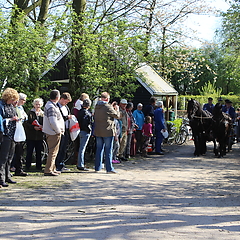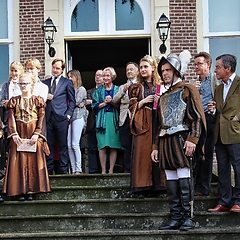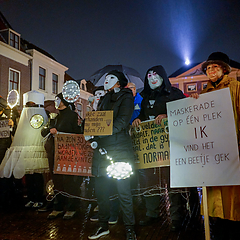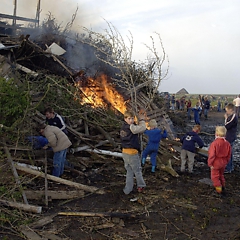The term varsity derives from the word university. The rowing regatta is annually organised at the beginning of April. Around a thousand students take part. For the Varsity several disciplines are rowed over a distance of 1.5 mile: ladies and gentlemen and various boat types. There is, however, one key race: the finals of the Old Four, a race of almost two miles. Every student rowing club in the Netherlands contributes four of its best rowers and a coxswain for this purpose. The winners of the Old Four get a wreath and medals. Within the world of rowing the finals of the Old Four is a unique match, because top rowers fight for their own club and university. A special part of the area for the public is arranged for VIPs, like mayors, rectors and management members of companies that act as sponsors. There is much attention for tradition in the competition. The more than 2500 visitors, young and old, dress according to old dress codes. The debauching and frolicking with a student of another club by grabbing each other’s jackets, belongs to the culture as well. Student-like is also the custom that after the finish of the winning Old Four all the club members jump into the water, as good as naked. The tie can usually stay on.



